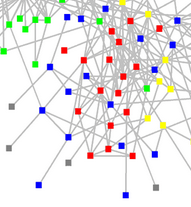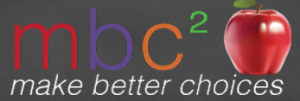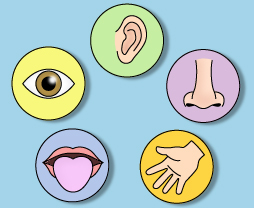December 20th, 2012
 Bad things tend to have a bigger impact on our thoughts, feelings and actions than good things do. Recent research suggests, Greed Not Generosity is More Likely to be Paid Forward.
Bad things tend to have a bigger impact on our thoughts, feelings and actions than good things do. Recent research suggests, Greed Not Generosity is More Likely to be Paid Forward.
“In five experiments involving money or work, participants who received an act of generosity didn’t pay generosity forward any more than those who had been treated equally. But participants who had been the victims of greed were more likely to pay greed forward to a future recipient, creating a negative chain reaction.”
While this is not a “happy finding” it is important for cognitive designers. Generosity is less a contagion than greed just as bad news spreads much faster and farther than good news. While this is likely tied to survival and rooted in our evolution it can limit cooperation and cultural development. You can access the full paper for free HERE.

Posted in Psychographics | No Comments »
December 18th, 2012
 An interesting study from Northwestern University suggests the answer is yes, at least when it comes to losing weight. One interesting thing about the study is its level of rigor – a randomized clinical trial. Another is that the App had the greatest impact when combined with an existing education-focused weight loss program:
An interesting study from Northwestern University suggests the answer is yes, at least when it comes to losing weight. One interesting thing about the study is its level of rigor – a randomized clinical trial. Another is that the App had the greatest impact when combined with an existing education-focused weight loss program:
“People who used the mobile phone technology and attended 80 percent of the health education sessions lost 15 pounds and maintained the loss for one year. The average weight loss for the mobile phone group — including those who did not attend the education sessions — was 8.6 pounds. The control group — which received the education sessions but no mobile app — did not lose weight.”
The success of the App stems from how it supports the cognition of self-regulation and learning from experience on a daily basis.
Focusing on small-step behavior changes and providing feedback on calories and activity it helped participants make better on-the-spot decisions about food and exercises. There was also a behavior coach in the loop. The coach provided weekly calorie and exercise goals and received data from the App and could schedule 15 minute calls twice a month to advise. Researchers believe that someone “watching and caring” created a positive sense of accountability in participants.
This is an important results especially since participants were older (average 58 years) and some with no prior experience with Apps.
 For the full story check out: Integrating Technology into Standard Weight Loss Treatment. or consider participating in the make better choices follow-up study.
For the full story check out: Integrating Technology into Standard Weight Loss Treatment. or consider participating in the make better choices follow-up study.

Posted in Behavior Change | No Comments »
December 11th, 2012
 Scientific American has a short article that does a good job summarizing the Three Critical Elements that Sustain Motivation. While we have covered the elements extensively on the Cognitive Design blog, it is worthwhile to review. The elements that sustain motivation include self-determination, value and competence. To keep going on tough tasks it is important to feel in charge, that the activity is worthwhile, you have the skill to get started and those skills improve with time. This helps to explain why some children avoid math and spend hours on video games.
Scientific American has a short article that does a good job summarizing the Three Critical Elements that Sustain Motivation. While we have covered the elements extensively on the Cognitive Design blog, it is worthwhile to review. The elements that sustain motivation include self-determination, value and competence. To keep going on tough tasks it is important to feel in charge, that the activity is worthwhile, you have the skill to get started and those skills improve with time. This helps to explain why some children avoid math and spend hours on video games.
While this seems simple, a complicating factor is that many of the challenges we face are forced on us by external factors. There is a change at work that requires we learn new skills or the doctors tells us its time for a lifestyle change. In both cases there is no sense of autonomy, a differed sense of value and a perception of incompetence. Many of the motivational remedies offered seem straight forward but take considerable skill to use in practice, especially on groups.
For example, to help me feel like I am setting direction my boss puts me on a team to help define the details of the change or my doctor lets me select a plan of exercise and diet. The hope is I will become engaged in making critical decision and develop a sense of ownership. After a while I might even think it is my idea. Of course I need to have enough motivation to work on the team or make the lifestyle decisions. And unfortunately, I was assigned the task, won’t see the immediate value to it nor feel particularly competent at it. Not much motivation for doing the task that is suppose to help me get motivated. A bit of a regress.
Read the rest of this entry »

Posted in Behavior Change, Psychographics | No Comments »
December 6th, 2012
 Writers that use specific adjectives that vividly invoke our senses sell more books. At least that is the result from research at Purdue. The finding holds for children and adult books as well as classic works and contemporary best sellers. The title of the study playfully attempts to illustrate the finding - A Ridiculously Unbelievably Preposterous Conclusion: Use of Adjectives in Best-Selling Book.
Writers that use specific adjectives that vividly invoke our senses sell more books. At least that is the result from research at Purdue. The finding holds for children and adult books as well as classic works and contemporary best sellers. The title of the study playfully attempts to illustrate the finding - A Ridiculously Unbelievably Preposterous Conclusion: Use of Adjectives in Best-Selling Book.
Sensory adjectives are those that are directly connected to taste, touch, smell, hearing or seeing. For example, grubby, tart, musty and immense are sensory adjectives. The study found for example, that Mark Twain used approximately 17 adjectives in every 100 words written!
Source of image: EducationWorld

Posted in Psychographics, Related Fields | 1 Comment »
December 2nd, 2012
 Basis has designed a small-steps health behavior change program meant to fit into our daily lives. You wear a wrist tracking device that looks like a stylish watch. The device records optical blood flow to measure heart rate, the number of steps you take, perspiration to measure intensity of effort and skin temperature. All of these variables are tracked throughout the day and night, run through some algorithms and displayed in your personal health dashboard. The dashboard reveals calories burned and other calculated values as well as trends in the physiological measurements. From the patterns you can spot opportunities to add small-steps into your daily activities to get healthier. For example:
Basis has designed a small-steps health behavior change program meant to fit into our daily lives. You wear a wrist tracking device that looks like a stylish watch. The device records optical blood flow to measure heart rate, the number of steps you take, perspiration to measure intensity of effort and skin temperature. All of these variables are tracked throughout the day and night, run through some algorithms and displayed in your personal health dashboard. The dashboard reveals calories burned and other calculated values as well as trends in the physiological measurements. From the patterns you can spot opportunities to add small-steps into your daily activities to get healthier. For example:
Adopting simple but powerful healthy habits, such as taking a walk during a coffee break instead of sitting at your desk, are scientifically proven to improve your health.
Definitely an exciting idea from a Cognitive Design standpoint. Modifying existing daily activities rather than making significant and abrupt lifestyle changes has a much lower cognitive load. Plus there is plenty of data and many small-step options that you can experiment with – two essential features of learning new behaviors from experience.
I am interested to hear from any readers that are using Basis.

Posted in Behavior Change, Service Innovation | No Comments »
November 27th, 2012
 Wellness programs are a key application area for cognitive designers. These programs seek to shift employee health behaviors in an attempt to lower employer costs and improve workplace productivity. Wellness is big business as over 90% of larger employers have some plan in place and there are many provisions in the Affordable Care Act (aka Obamacare) that focus on health, wellness and prevention in the workplace. So I am always on the look out for scientific studies of what works in wellness.
Wellness programs are a key application area for cognitive designers. These programs seek to shift employee health behaviors in an attempt to lower employer costs and improve workplace productivity. Wellness is big business as over 90% of larger employers have some plan in place and there are many provisions in the Affordable Care Act (aka Obamacare) that focus on health, wellness and prevention in the workplace. So I am always on the look out for scientific studies of what works in wellness.
For example, Rand just released a must-read report that provides a Review of the US Workplace Wellness Market. They examine 33 studies and outline core elements in a program, itemize interventions used, provide uptake and participation statistics and draw some important conclusions. It is clear that wellness programs have passed the “proof of concept” phase but we don’t have a clear evidence base for interventions that work. The key conclusion on impact:
“Based on the available literature, we find evidence for a positive impact of workplace wellness programs on diet, exercise, smoking, alcohol use, physiologic markers, and health care costs, but limited evidence for effects on absenteeism and mental health. We could not conclusively determine whether and to what degree the intensity of a wellness program influences its impact.”
The report is quick to point out most wellness programs are not even assessed and those that are often lack rigor in assessment. From a cognitive design standpoint we know that without frequent assessment and feedback at the individual level it is nearly impossible to do the learning from experience necessary for lasting behavior change. And this must go far beyond the individual health risk assessments wellness programs use. Same for the program level. Without frequent assessment and feedback at the program level it is not possible to do the continuous improvement and organizational learning needed to optimize a wellness initiative.
More bluntly, you won’t get deep, broad and lasting behavior change at the individual and group level unless your wellness program is designed to measure and provide frequent feedback on physiological, activity, process, participation and financial measures. The more transparent (shared) and real-time the better.
There are big opportunity for cognitive designers in wellness!

Posted in Behavior Change, Examples | No Comments »
November 24th, 2012
 A placebo is a substance with no medicinal properties that can nevertheless have therapeutic effects on some people. Sometimes called sugar pills or sham medicine, they produce real changes in our psychology, bodies and well being. How and why they work is a bit of a mystery but recent research led by the University of Michigan Medical School suggests personality factors play a role.
A placebo is a substance with no medicinal properties that can nevertheless have therapeutic effects on some people. Sometimes called sugar pills or sham medicine, they produce real changes in our psychology, bodies and well being. How and why they work is a bit of a mystery but recent research led by the University of Michigan Medical School suggests personality factors play a role.
Researcher tested a dozen healthy subjects for a response to a pain placebo. They found angry or hostile type subjects showed little response whereas those that were resilient, trustworthy and altruistic showed the best response. To quote:
“We ended up finding that they greatest influence came from a series of factors related to individual resiliency, the capacity to withstand and overcome stressors and difficult situations. People with those factors had the greatest ability to take environmental information — the placebo — and convert it to a change in biology.”
The change in biology here refers to the fact that they are generating natural pain killers at multiple sites in their brain.
While this study needs to be replicated on larger groups the fact that adaptive personality traits make the best use of placebos will catch some by surprise.
 As we have reported elsewhere on the Cognitive Design Blog placebo effects are widespread and real. They even work with processes or rituals that don’t involve pills, injections or clinical equipment. The door is wide-open for some creative cognitive designers to develop ethical uses of the placebo effect to address any number of organizational and individual challenges. How about a pill or ritual that accelerates organizational change or doubles my creativity?
As we have reported elsewhere on the Cognitive Design Blog placebo effects are widespread and real. They even work with processes or rituals that don’t involve pills, injections or clinical equipment. The door is wide-open for some creative cognitive designers to develop ethical uses of the placebo effect to address any number of organizational and individual challenges. How about a pill or ritual that accelerates organizational change or doubles my creativity?

Posted in Cognitive Bias, Psychographics | No Comments »
November 19th, 2012
 The answer is yes, at least according to a recent meta-study that reviewed five projects including some 9000 smokers. More specifically,
The answer is yes, at least according to a recent meta-study that reviewed five projects including some 9000 smokers. More specifically,
“… smokers who used mobile messaging interventions were twice as likely to make it six months without smoking than those who didn’t.”
Messages included scheduled motivational statements, hints for managing temptations and rapid response to texts about cravings. Motivation, skill and help from someone else when you are about to fail is powerful cognitive design for making any type of behavior change. Unlike many other health apps this solution reaches out and engages the smoker acting as a nudge, reminder and coach.

Posted in Behavior Change, Examples | No Comments »
November 16th, 2012
 Changing the behaviors of people that have problem with drinking and driving or drinking and violence is tough. An interesting sobriety program in South Dakota claims to be having success with six years of data and an independent RAND study to back them up. Key features of the program include:
Changing the behaviors of people that have problem with drinking and driving or drinking and violence is tough. An interesting sobriety program in South Dakota claims to be having success with six years of data and an independent RAND study to back them up. Key features of the program include:
“…frequent alcohol testing with swift and moderate sanctions for those caught using alcohol reduced county-level repeat DUI arrests by 12 percent and domestic violence arrests by 9 percent.”
Frequent testing means two breathalyzers daily ( morning and evening) and those that fail or don’t participate get a day or two in jail, no exceptions. This supports the idea that daily crisp measurements that drive immediate and modest corrective feedback can reprogram even drug-based habits.

Posted in Behavior Change, Examples | No Comments »
November 13th, 2012
 We are hardwired to finish what we start. That is, unfinished tasks will bug us until we complete them. More formally:
We are hardwired to finish what we start. That is, unfinished tasks will bug us until we complete them. More formally:
“The Zeigarnik Effect is the tendency to experience intrusive thoughts about an objective that was once pursued and left incomplete (Baumeister & Bushman, 2008, pg. 122). The automatic system signals the conscious mind, which may be focused on new goals, that a previous activity was left incomplete. It seems to be human nature to finish what we start and, if it is not finished, we experience dissonance.”
The effect is named for the Russian psychologist that first noticed it at work with waiters in a restaurant. The waiters were able to remember complex orders until they were served. Once the order was complete the waiters lost all memory of them. An incomplete task is remember far more often than a completed one.
 From a design standpoint this means we can use incomplete tasks to create specific cognitive effects. The PsyBlog suggests that we can use it to help beat procrastination and the BBC has an post that uses it to explain the psychological punch of the wildly popular game of Tetris.
From a design standpoint this means we can use incomplete tasks to create specific cognitive effects. The PsyBlog suggests that we can use it to help beat procrastination and the BBC has an post that uses it to explain the psychological punch of the wildly popular game of Tetris.
“Tetris holds our attention by continually creating unfinished tasks. Each action in the game allows us to solve part of the puzzle, filling up a row or rows completely so that they disappear, but is also just as likely to create new, unfinished work. A chain of these partial-solutions and newly triggered unsolved tasks can easily stretch to hours, each moment full of the same kind of satisfaction as scratching an itch.”
If you don’t believe it try it out.
I’m interested to hear from readers with ideas on how else to apply the Zeigarnik Effect to interesting design problems. For example, how can we use it to improve change or innovation efforts?

Posted in Examples | No Comments »
 Bad things tend to have a bigger impact on our thoughts, feelings and actions than good things do. Recent research suggests, Greed Not Generosity is More Likely to be Paid Forward.
Bad things tend to have a bigger impact on our thoughts, feelings and actions than good things do. Recent research suggests, Greed Not Generosity is More Likely to be Paid Forward.










